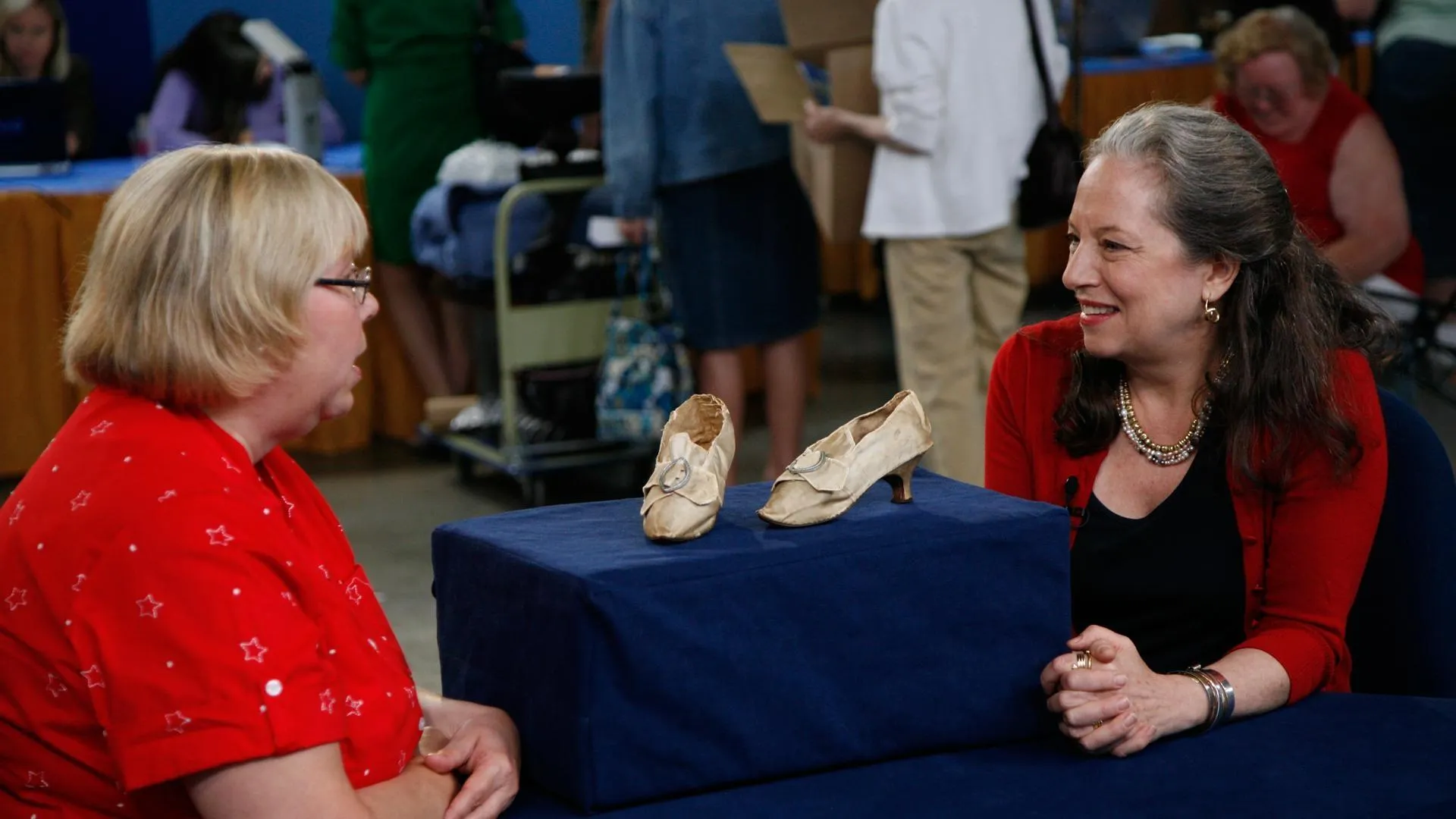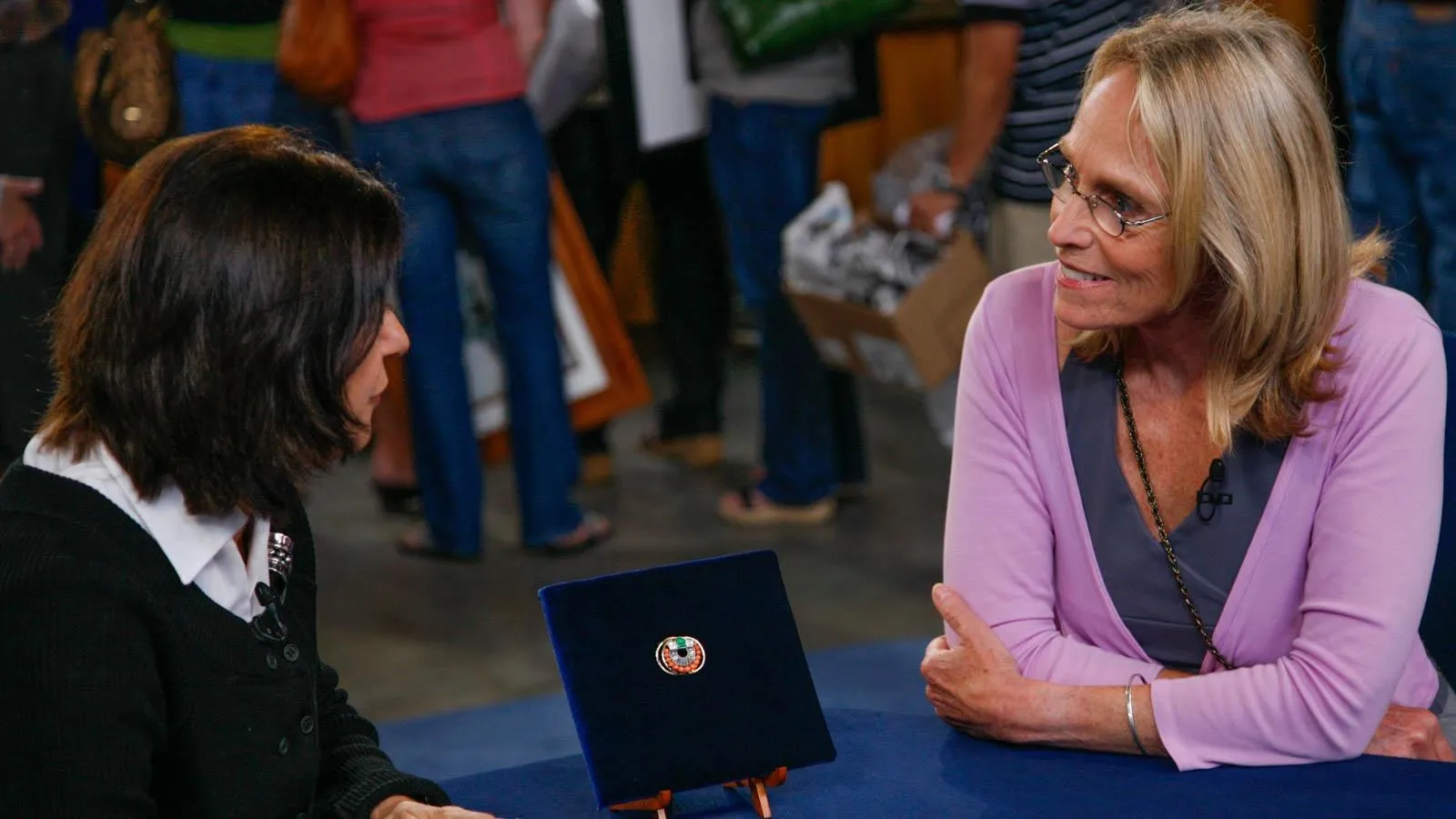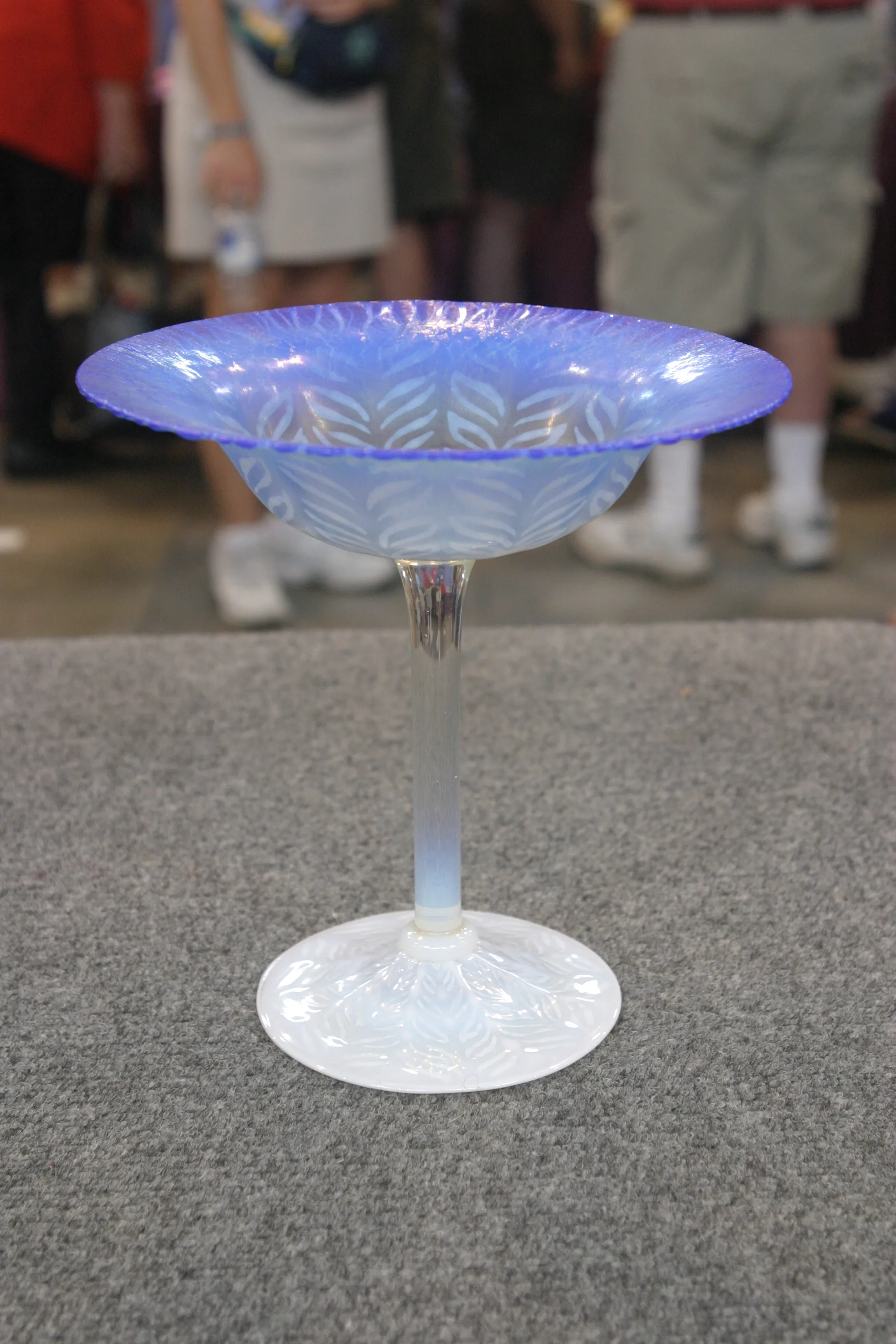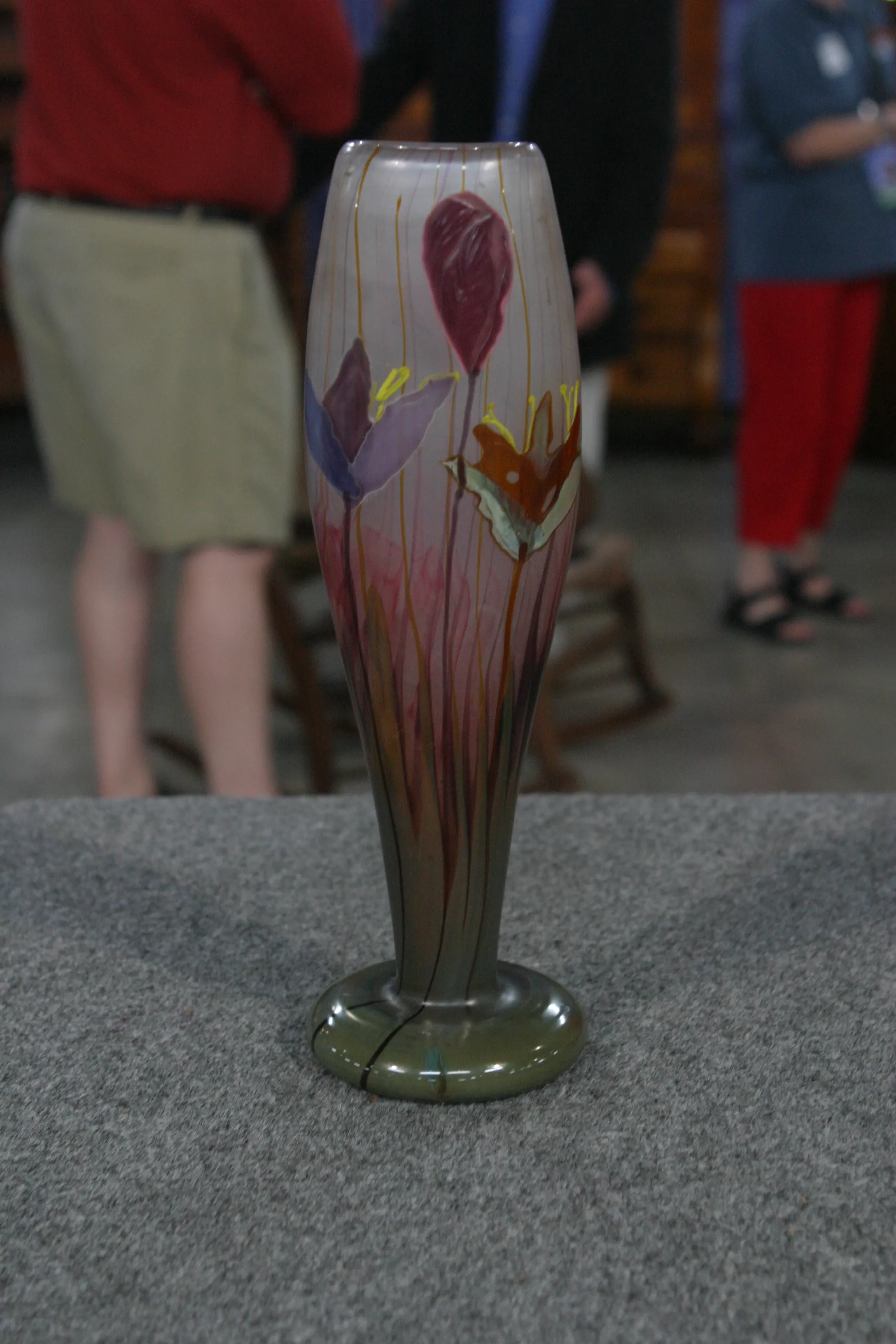GUEST: I brought this Tiffany vase. It belonged to my mother. She collected antiques for many years, and this was one of her first pieces of Tiffany. She bought it sometime in the 1970s. She bought it from a antique dealer here in Connecticut.
APPRAISER: Was the antique dealer a Tiffany specialist, do you know?
GUEST: They dealt a lot in Tiffany and other glassware, as well. She thought it might be an experimental piece, too, but she wasn't sure.
APPRAISER: It's not an experimental piece, but it dates probably from about 1895. And the reason I know that is because it's numbered in a very special way on the underside.
GUEST: Okay.
APPRAISER: It has a little "o" and then it has a four-digit number. This kind of numbering system was used from 1895 to 1900, and there are approximately ten-and-a-half thousand pieces made un, with this prefix number. At this time, Tiffany actually wasn't inscribing these pieces with LCT, or Louis Comfort Tiffany. He was putting paper labels on the bottom and then putting these numbers on, the registration number, on the bottom, and that was it. People have been known to put fake labels on the bottom of glass pieces, but I can assure you that this is an original. In the old days, when people were first doing research on Tiffany, someone speculated that the little "o" meant that it was a special order. There's actually nothing to support that theory. It was just an early numbering system. And one of the reasons you can tell is because a lot of the vases look exactly the same. And, frankly, ten-and-a-half thousand special-order pieces of glass is an awful lot of special orders. This typifies the early types of pieces. It's a double-gourd form, and you can see that they've tried to experiment with iridescent decoration. And it's a little faint on this one. That they're just working on it. These are the early days. And then you have this lovely feathering going through the piece. Sometimes you would see it in a smaller size, and this is about as, as big as this piece ever got, and...
GUEST: She affectionately called it "The Blob." (laughing)
APPRAISER: The Blob?
GUEST: The Blob.
APPRAISER: Well, and I bet she never put any flowers in it.
GUEST: No, she didn't. (laughs)
APPRAISER: She wouldn't because this really wasn't meant to be a utilitarian object. It was, it was the object itself-- this is the art. And that's why it's called art glass. Have you ever had it appraised?
GUEST: Um...
APPRAISER: Or did your mother ever update anything on this?
GUEST: My mother had it appraised in the early 1980s for $3,500.
APPRAISER: There are now more and more collectors who really want to specialize in just the early pieces...
GUEST: Really?
APPRAISER: ...particularly from the 1890s. So the price for these has appreciated. If this were in a retail shop today, it would easily sell for between $9,000 and $12,000.
GUEST: Wow.
APPRAISER: It's a lovely piece of glass.
GUEST: My mom had wonderful taste.












